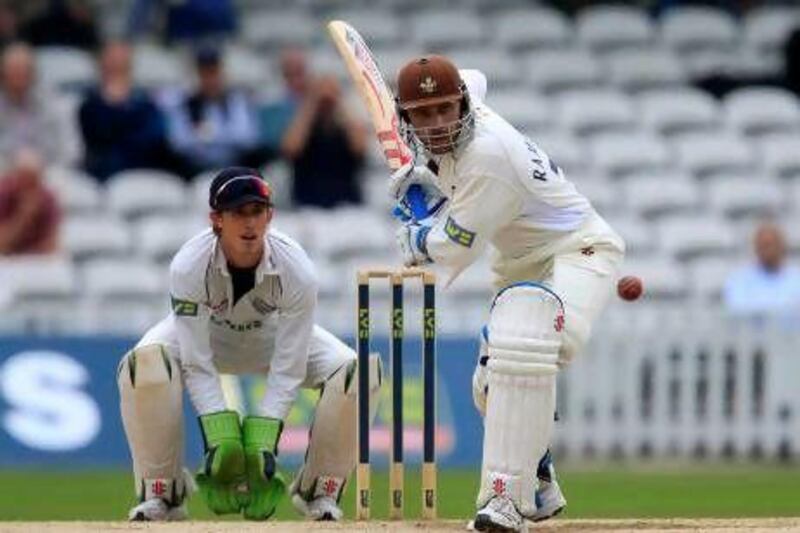The domestic giant has long held a special place in cricket. In a way, he symbolises best the tragic-obsessive nature of following cricket.
Over time he does not remain a cricketer as much as become an enduring loyalty, which is a far more potent object.
Every season he is there, scoring obscene tons of runs (invariably batting domestic giants outnumber bowling ones).
For much of his career, he is pushed as the next big thing, on the way developing a hardcore fanbase who take his inclusion to be a cause beyond the sporting realm.
Anecdotes are first cherished, then embellished and then spread, about one innings on a nasty green top, or some filthy, sticky turner that the watcher swears is not just the finest innings he has seen, not even just proof that he is good enough, but grand and sweet vindication itself.
If he is lucky his national team fails and, in absence, his stock perpetually rises. But if he does get picked and fails (if he succeeds he is no longer a true domestic giant of course) then it is not because of him as much as it is because of everything around him.
In fact, his most devoted followers secretly do not mind him failing so that he can come back to the safety of proving all those people wrong who are not even watching.
But that place might soon become a casualty to this new age of international cricket where there is just so much of it that watching and following domestic cricket too easily falls by the wayside.
And with new Twenty20 leagues changing notions of how we follow a side, or a player, it is unlikely the domestic giant - a beast of the four-day game - will be quite as giant-like in the future as he has been.
Which is why the exit of Mark Ramprakash this week is more than just the departure of one of the biggest of the breed. It feels like the end of something much bigger and broader than just Ramprakash, county cricket itself, or at least one idea of county cricket as grasped by a world outside England.
Ramprakash was of that time when the county championship was still the premier domestic season in the world, relevant to the world outside as it was to England itself.
The Australian domestic scene was probably tougher and of better quality, and more difficult to break into, but the world's greatest players spent their summers in England improving themselves as players, securing their financial futures, bedding themselves into a global cricketing fraternity.
They stayed for seasons, the county becoming a second home. Through these players, from the West Indies, Pakistan, Australia, New Zealand, India, the entire world kept an eye on the championship.
Just in Pakistan, for example, Wasim Akram and Waqar Younis meant the fortunes of Lancashire and Surrey respectively were relevant; Richard Hadlee probably did likewise for Nottinghamshire in New Zealand; in the West Indies, Somerset, home to Viv Richards and Joel Garner and Gloucestershire for Courtney Walsh, became significant.
By the by, men such as Martin Bicknell, Graeme Hick, Glenn Chapple, other county giants of that time also became known to a greater audience. But the county circuit Ramprakash leaves behind is a more transient place, transitional and transactional.
Players come and go on short-term contracts, often format-specific, to fill a gap here, an absence there. Money is made, but maybe not that much else.
The identity is fading.
And what of Ramprakash himself, the last giant? For years he was like some running in-joke England had going with itself, or at least he was to the extent that they clearly knew something about him the rest of the world did not.
They kept saying that he is the most technically correct and gifted batsman of his generation. And everyone else just kept seeing this batsman with some nice shots but an inability go beyond 27 (his first two Test innings) and then visibly torture himself about it.
That is deliberately glib of course; he had good spells, such as the 1998-99 Ashes (four fifties and an unbeaten 47 against a strong Australian attack) or the two hundreds against West Indies and Australia.
But he did end with the same Test average as he had after his first Test - that is, 27.
After 52 Tests. Clearly, the rest of the world was not in on this.
Would he have prospered under a more stable selectorial era? Maybe a more understanding captain could have helped? Did he just need to unwind a little internationally, feel less demons swirling around?
These 'what ifs' could probably be applied to domestic giants throughout the world.
But the most relevant question asked of his retirement this week came from Lawrence Booth, editor of the Wisden Almanack and cricket writer for the Daily Mail.
Could there be another like Ramprakash, "a player dedicated enough to have a 25-year first-class career and leave youngsters in his wake?"
Could there be another player who plays long enough and well enough to score a century of first-class centuries (Ramprakash was the latest entrant to that illustrious club and glancing down that list, he is probably going to be the last)?
Could there be another player so feted away from the international scene?
Follow us
[ @SprtNationalUAE ]
& Osman Samiuddin
[ @OsmanSamiuddin ]





